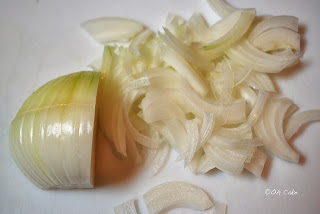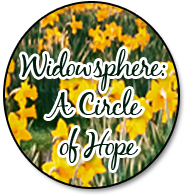_____________________________________________________________________________
Describe
the book:
Half Italian (and then
some) is the story of my Italian family, as seen through my eyes. The humor is
unique, like the time my grandmother flushed her dentures down the toilet,
later retrieved from a septic tank. The book isn’t just for Italians; it’s for
anyone needing a good laugh.
Currently, the book is a
finalist in two categories of the Readers’ Favorite 2013 book contest.
What
inspired you to write the book?
This came after reading
Frances Mayes’ books on Tuscany and Yvone Lenard’s on Provence. Both authors
created worlds I couldn’t wait to get home to each afternoon, simply by writing
about “what happened.” I found myself wishing I owned something that had
“happened” to write about. But all I could think of was two stories on the
Italian side of my family: a homemade electric chair (complete with live shock)
that my cousins made as a joke, and my family using a still to make booze
during Prohibition. Those didn’t seem like much of a start. But my father had recently
passed away, and I realized time was precious. So one Saturday morning I sat
down at the computer to type those two stories into a document. With that,
something in me opened and the rest of the words flew.
I
saw on Amazon that you write about your grandmother (sounds hilarious). What
other family members do you write about?
A mixture of the
immigrants, the American-born generations and the Europeans: my great aunt, my
uncle, my mother, a particularly lively cousin, and some of my family who still
live in Italy.
My grandmother’s first
U.S. experiences have entertained people for many years. She’d never seen a
banana, mustard, or a fruit pie until adult age during her migration from Italy
to California, and threw them all out the window of her train because she
thought they were spoiled. (Mushy fruit? Yellow meat? Wet, squishy stuff,
between crusts!?)
Is
the book a series of short pieces or one long, connected story?
It’s one connected
story, beginning with my family leaving Italy. As they continue their lives in
Southern California, I’m always present, commenting. My interest in the old
country grows, and the book’s apex is my first visits to Italy.
What’s
your favorite part of the book?
The chapter titled
“Grandma” is particularly important to me. I hadn’t intended to include her
death, but once I began to write about it I realized I’d never processed that
loss. That chapter is a turning point, the end of one period of my life. The
loss of my great aunt, another life-changing event, is also a section that’s
important to me.
I loved writing about
the chickens.
What
has been your family’s response to the book?
Did they know ahead of time you were
writing about them?
A few family members
knew I was writing the book and couldn’t wait to read it. Then, surprise! They
had little to say, once they read it. In fact, one cousin remembered very
little about it, when we spoke later. Maybe they’ve just heard those stories
too many times.
Enthusiasm at this time
is coming from those who don’t know my family, which pleases me greatly – that
means I did my job, and wrote a book that’s interesting to a wide audience, not
just those who know me.
I particularly like
that the book gives new life to a past that’s gone. The loss of my grandmother
was devastating, so hearing remarks about her now, from people I don’t know
give her a new kind of life. I feel like she’s standing nearby, smiling.
What
is your writing background?
Half Italian (and then
some) is my first book.
Tell
about your writing process:
I write down my
thoughts ASAP because some tend to fly away and not come back. On vacations, I
carry a tiny notepad and make bullet-points. Doesn’t matter how rough-form the
thoughts are, as long as I get them in writing. After that, I try to be
patient. Connecting the pieces of even one small story can be challenging. I’ve
learned, though, that just a few minutes spent each day on one section can
produce a smooth story that seemed impossible to complete when it was nothing
more than raw thoughts. Later, when re-reading, I ask myself if things make
sense. Have I written about a character before introducing her? Is there a
contradiction as to when events took place?
What
are you working on now?
I just finished “On the
Roads of France,” a collection of three short stories about driving in France,
plus one in Italy, all my own experiences.
The liner notes will include, “From
the lanes of a medieval village to receiving a speeding ticket, this collection
will amuse as well as provide tips on how to supplement and respect a GPS.”
I’ll also be continuing
with a second memoir, about the other side of my family, called “The Other
Half.” This will have some darker moments than Half Italian (and then some).
Any
tips for writers, especially memoir writers?
Read your work, and ask
why you want to include the material you’ve written. What does it contribute? Does
it support your book’s general direction or one of its threads? Would someone who
doesn’t know you find the material entertaining?
I recently read a
memoir that was presented like an inventory list. This, and limited personal observation
from the author made the book a difficult read. Several parts of the book read as
if random memories had been recorded on tape and those words were simply transferred
from recording onto the book’s pages. The book’s only direction seemed to be
linear time, such as who did what and when they did it, with few comments or
feelings from the author. One section was simply a roster of who’d lived where,
like names poured from a bucket, with no direction or reason.
Make your writing
personal. When writing about someone else, share your own experience of that material with your readers, not merely
“what happened.”
******************************************************************************************
Kobo
link:
BN
(Nook) link:
Amazon
(Kindle) link:
Blog:
Facebook:
Memoirs
Only link to Half Italian:






















































